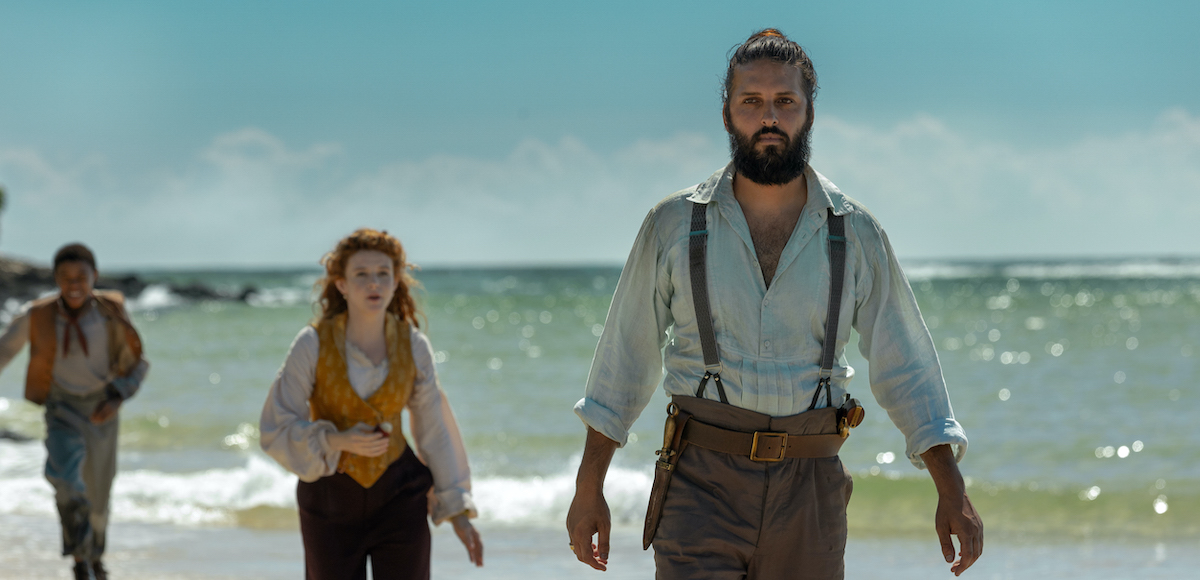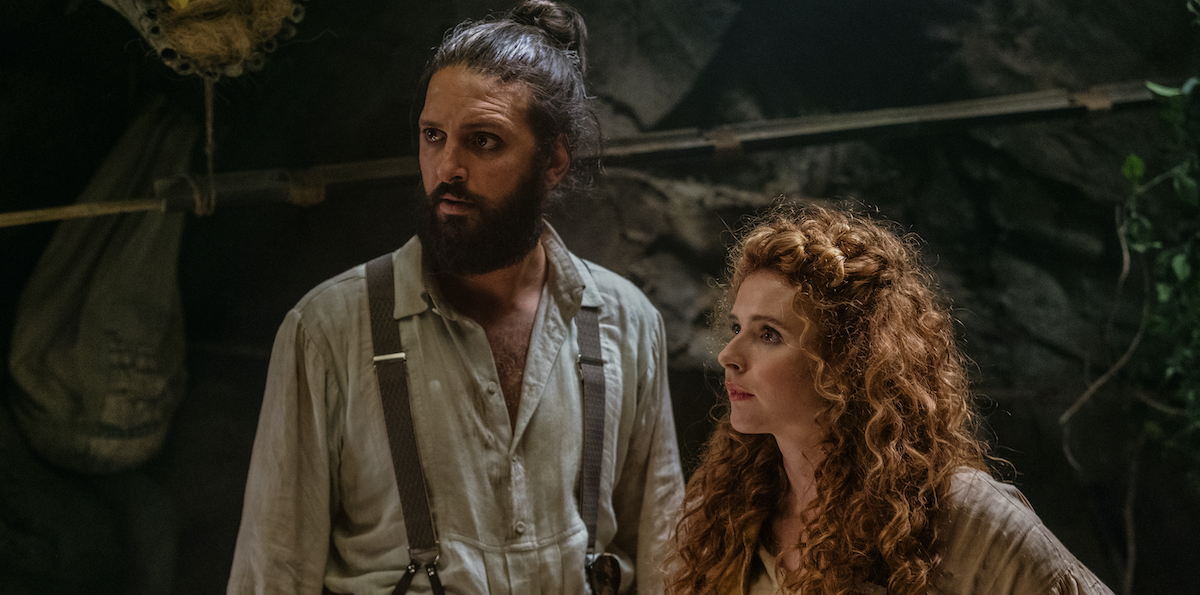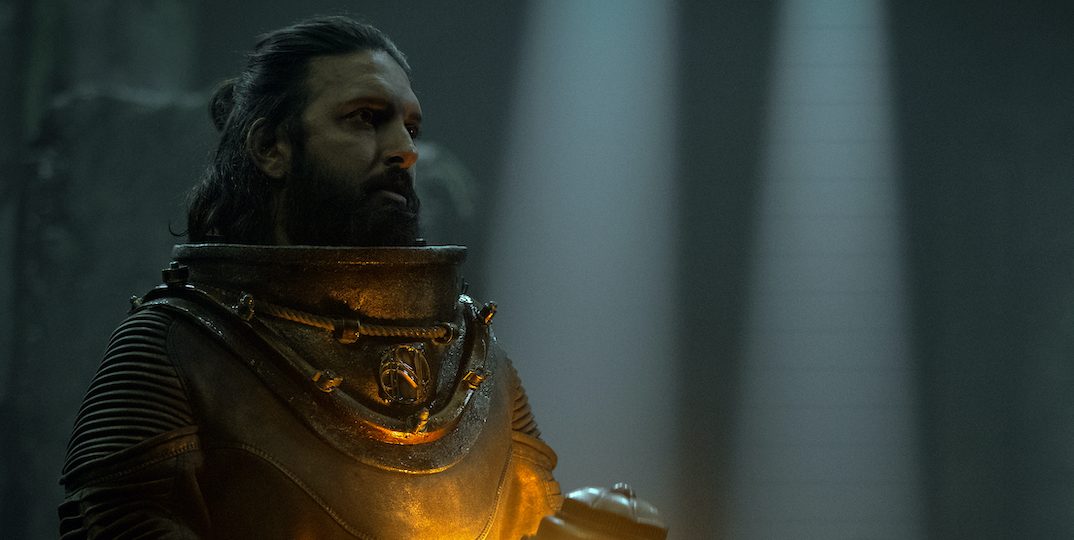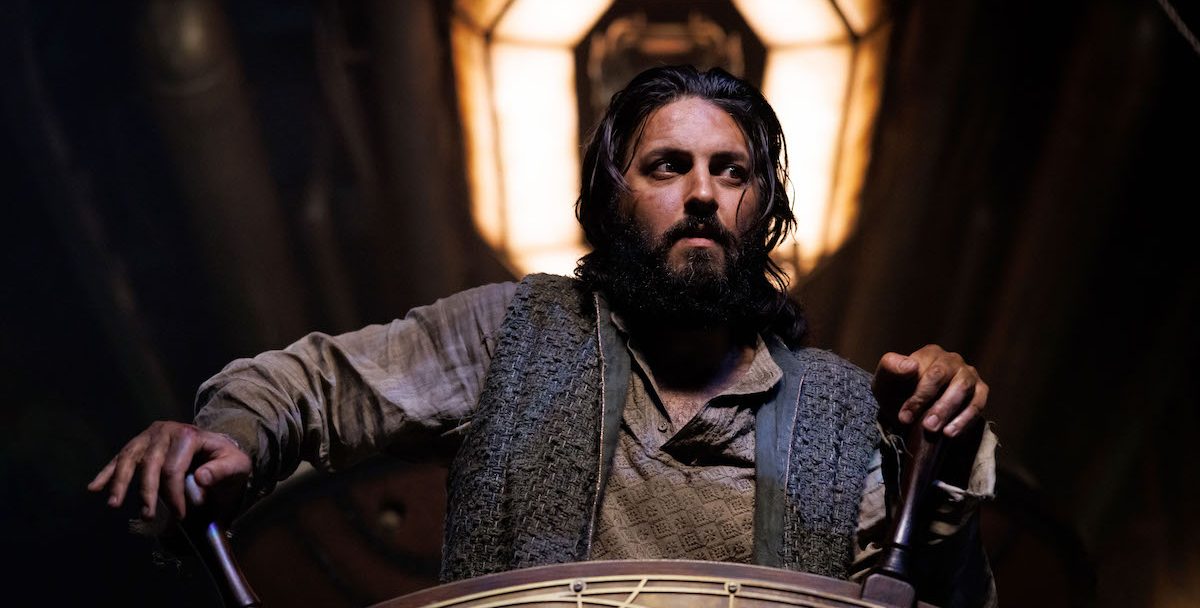Created by James Dormer, AMC’s ‘Nautilus’ is a period adventure drama series that follows Captain Nemo and his crew as they board the eponymous submarine, embarking on an adventure of a lifetime while being chased by the forces of the British East India Mercantile Company. The ten-part series opens with Nemo and his crew escaping the clutches of the British in the submarine that the company wanted to use as a weapon in their quest to colonise the world. However, as the story progresses, we find out more about Nemo, as well as his crew, which reveals more depth within the characters, making them seem more real.
Nautilus Gives an Origin Story to the Fabled Captain Nemo
‘Nautilus’ is an entirely fictional creation that is inspired by Jules Verne’s 1870 novel ‘Twenty Thousand Leagues Under the Sea,’ which features Captain Nemo and his misadventures. The novel keeps the protagonist’s origins shrouded in mystery, and there isn’t much that the reader gets to know about him, except the fact that he hates imperial powers and holds a fire of vengeance in his heart. It is in the second novel, ‘The Mysterious Island,’ that Verne revealed that Nemo is an Indian prince who led the revolution against the British and lost his family in the process.

His real name is revealed to be Prince Dakkar of Bundelkhand, and he is mentioned as the descendant of Tipu Sultan, who ruled the kingdom of Mysore in the late 18th century. While Tipu Sultan was a real ruler, Nemo’s connection to him is made up by the author. He used details from real history to give a more realistic touch to his protagonist, who remains an invention of his mind. The show leans into these connections to concoct a different version of events.
Nautilus Series Presents Its Own Twist to the Book Protagonist
It is believed that originally, Verne wanted Nemo to be of Polish nobility, fighting against Russian forces following the January Uprising. However, his editor believed that it would harm the book’s chances in the Russian market and affect France’s relations with Russia, so he advised Verne to make Nemo’s origins ambiguous. This led the author to make the changes, and he chose to give more details about the protagonist’s background in the sequel. When James Dormer thought about bringing Verne’s story and characters to the screen, he decided to give Nemo a proper backstory, exploring his origins rather than delving directly into his adventures. While the author gave enough about the character’s present, there was a lot left to be explored about his past.

The show creator used these gaps in the novels to flesh out a story that picks up the details from Verne’s works and then spins its own tales about Nemo. While the story and the character remain entirely fictional, Dormer and the team were dedicated to making the show as realistic as possible. For this, they opted for intricately built sets and practical effects, rather than relying on CGI to do the work. The entire Nautilus in the show was built on different sets, which allowed the actors to immerse themselves completely in the world of Captain Nemo. Above all, the creator’s intention was to bring a perspective that hadn’t previously been explored in the context of the protagonist, who has often been whitewashed, erasing his origins and the true purpose of his role.
Shazad Latif Prepared Intensely to Embody Nemo Both Mentally and Physically
One of the major points of interest about ‘Nautilus’ was that it had to be told from the perspective of Nemo and his crew, showcasing the brutality of the British East India Mercantile Company. The show’s creators wanted to focus on the perils of colonialism “from the perspective of the colonised,” for which they readily made some adjustments in the characters. With the actors coming on board, more details were added, and changes were made as they brought the perspective of their own background to the roles. Keeping this in mind, British actor Shazad Latif was tasked with embodying Nemo on the screen, and he took the task very seriously.

To understand Nemo, Latif read Jules Verne’s book and borrowed all the details he felt were relevant to the character. The script allowed him a lot of space for exploration, one of which was the physicality of the character. For Latif, getting Nemo’s voice right was one of the most important things, especially because, as the captain, he would have to do a lot of shouting and screaming. He used the few months that he had from his casting to when the filming commenced to do vocal exercises and find the right pitch and tenor for his character. At the same time, he also confronted the physical demands of the role, as there were a lot of action scenes, from chase sequences to sword and gunfights.
For this, he trained to prepare his body for the challenges of the stunts. He was also focused on getting Nemo’s wardrobe right as it exhibits his origins while also showing who he is in the moment. He closely collaborated with the costume department to understand and work on Nemo’s style. For the actor, the role holds significance in the fact that there has rarely been an actor of South Asian descent in the role written specifically with their ethnicity in mind. With the opportunity at his door, he wanted to do right by it, not just in terms of representing Nemo’s origins, but also in presenting his mental and emotional turmoil, which is fueled by revenge and a desire for justice.
Read More: Are Nautilus and Dreadnought Real Ships?


